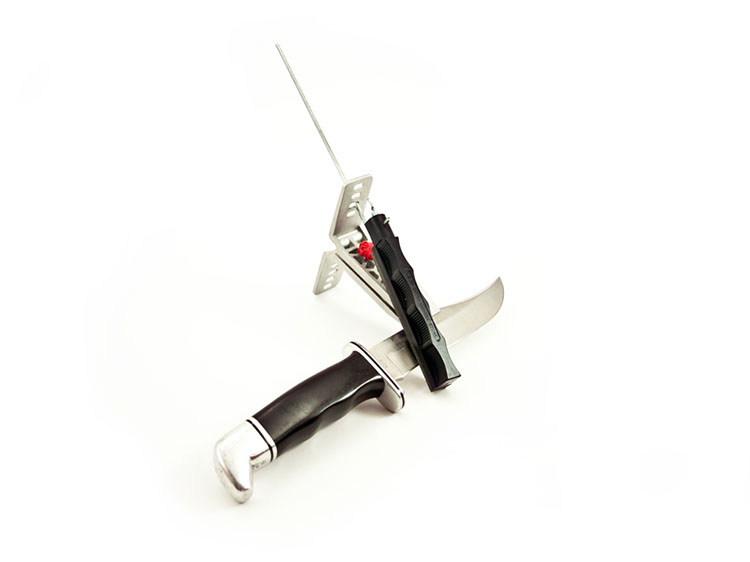
In a previous paper issue's Range Bag, we published a relatively in-depth and hands-on review of the Victorinox Swisstool Spirit. In that review, we espoused the belief that anyone whovalues even a modicum of self-reliance should make a point of regularly carrying some basic tools, either in the form of a pocket knife or a multi-tool. What we neglected to mention was that, just like firearms, pocket tools require maintenance, and a large part of that maintenance requires keeping a keen edge on the blades. After all, we've all heard the old chef's adage that a dull blade is more dangerous than a sharp one, and should a situation ever arise where you need, rather than want, your knife to cut something, you'll appreciate a sharp edge.
Now, there are plenty of ways to bring a knife's edge back to its full potential. They range in involvement and cost, on one extreme you can simply send it to be professionally honed and at the other extreme you can spend hundreds of dollars on your own professional sharpening contrivance and do it yourself. The Lansky knife sharpening system sits somewhere in the middle. Small, incredibly affordable, and mostly idiot-proof, it makes sharpening almost any knife quick and easy.
Available in various kits that range in price from $35 to $100, every Lansky kit includes the following basic components: a t-shaped knife clamp and rod guide, oil, rods and stones. When assembled, the knife is inserted into the t-shaped clamp and tightened to avoid any slippage. Then one of the rods is affixed to one of the sharpening stones, and run through any one of the holes located on the top and bottom of the clamp, setting the sharpening stone's angle against the blade. From there, it's a simple task to run the stone across the blade's edge, with the guide holes in the clamp creating a consistent angle against the blade. The only difference between the various kits is the stones that are included; some include shaped stones to allow for serrated knives to be sharpened while others include finer polishing stones. The topmost $100 kit includes diamond-coated sharpening stones for the quickest steel removal and edge profiling possible.
We've been using the mid-tier "Deluxe Five Stone System" to sharpen various blades for a few months now, and this system has the potential to deliver incredibly keen, incredibly sharp edges. There's a bit of a learning curve to mastering the Lansky setup ; most of which pertains to getting the knife set within the clamp properly. Being that there are only four angle options provided by the clamping system, it's crucial that whatever knife is being sharpened is held within the clamp at the right depth to allow one of the guide holes to place the sharpening stone upon the blade's edge at an angle that matches the original bevel. The easiest way to check this is to mark the edge of the blade with a Sharpie and run a stone over it. The passage of the stone will wear some of the Sharpie off the bevel, and subsequently show if the knife needs to be moved inward or outward, as well as which guide hole will work best.
In fact, once we made that discovery, the only downside to the Lansky system is its size constraints. The clamp, rods, and stones are only so large, which means that broad-bladed knives like the classic Buck #119 fixed-blade knife sometimes precludes the use of the sharpest bevel guide holes as the large thumb-screw used to tighten the clamp gets in the way of the stones' movement. Also, the guide rod is always directed through the same hole throughout the sharpening process, so it is forced to pivot around the length of the knife. This means the stone's angle to the blade will be somewhat more acute at the extreme ends of the knife blade (at the hilt and tip), where the stone is furthest from the clamp and it's guide holes. However, since we've been using some masking tape stuck to the blade in order to give the clamp a bit more purchase on smooth knives, it's easy enough to simply align the masking tape along the blade and use it as a sort of guide, should you need to move the clamp down an especially long knife to sharpen it in sections.
Is it as good as some of the more complex knife sharpening rigs out there? In a word, no. It's slightly more labour intensive, and due almost entirely to its smaller size, it’s somewhat limited in what it can sharpen. However, if you're happier putting in a wee bit more time in exchange for a more affordable setup, and one that can be stored far more easily, the Lansky system offers a lot of value.